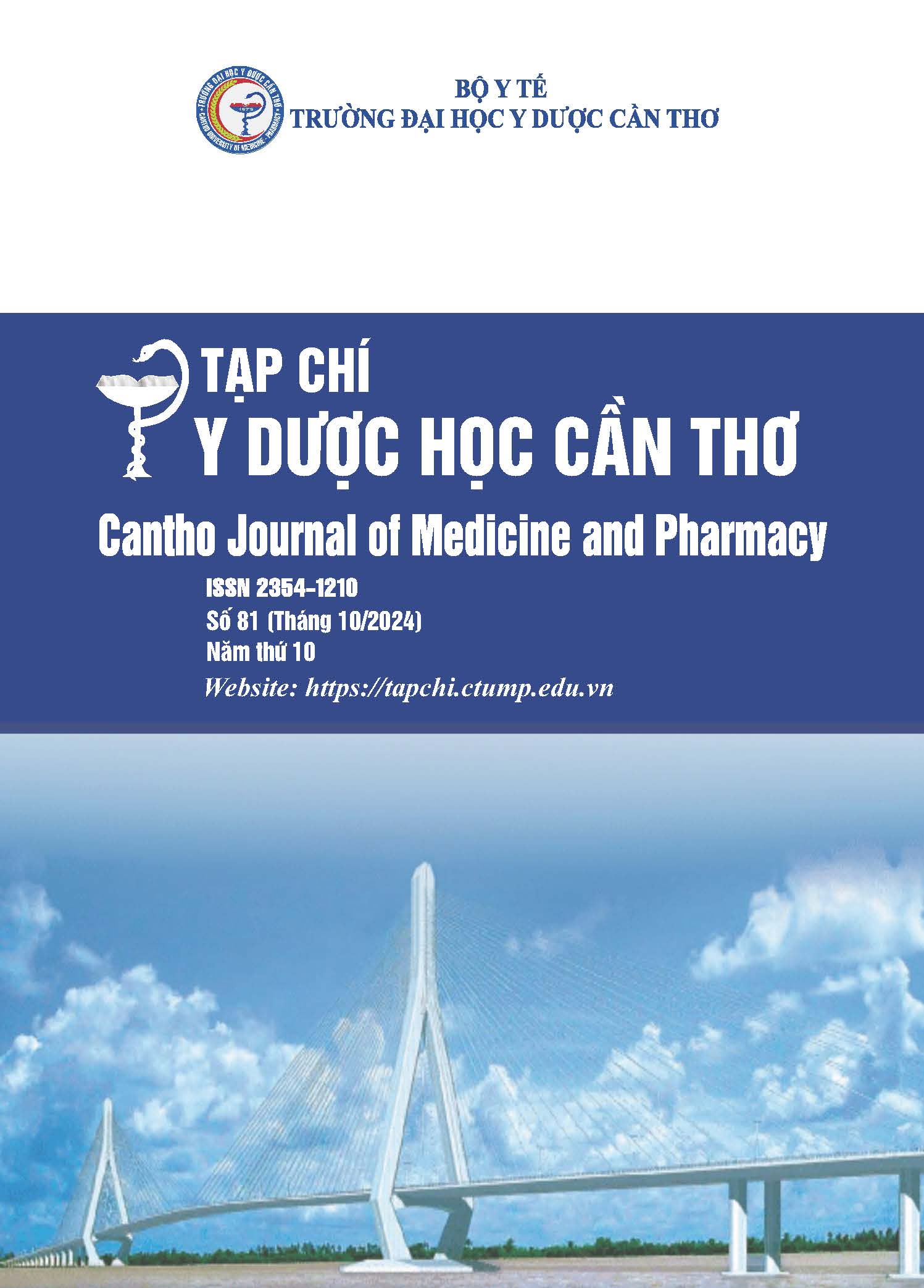BOTANICAL CHARACTERISTICS AND DNA BARCODE OF JASMINUM NERVOSUM LOUR. – OLEACEACE
Main Article Content
Abstract
Background: Jasminum nervosum (Che vang) is a valuable medicinal herb, traditionally used as an herbal supplement for the postpartum period. However, there is currently a lack of scientific research on this species’s morphological and anatomical characteristics. Objectives: To survey of the botanical characteristics, and DNA barcodes of Jasminum nervosum were performed for the plant identification. Materials and methods: Jasminum nervosum collected in Quang Nam province has been described, photographed, and analyzed for its morphological and anatomical characteristics, the microscopic characteristics of used parts powder, along with DNA barcoding analysis of the rbcL region. Results: Based on the two characteristics of plant morphology and DNA barcoding, Che vang was identified as Jasminum nervosum Lour., along with anatomical data and microscopic characteristics of used parts powder. Conclusions: The morphological and anatomical characteristics, of Jasminum nervosum were successfully detailed. The diagnostic characteristics of powder were also reported. The DNA barcoding was analysed. All results were useful for plant identification.
Article Details
Keywords
Che vang, Jasminum nervosum, DNA barcode, morphology, anatomy
References
2. Huo L., Lu R., Li P., Liao Y., Chen R., Deng C., ... & Li Y. Antioxidant activity, total phenolic, and total flavonoid of extracts from stems of Jasminum nervosum Lour. Grasas y aceites. 2011. 62(2), 149-154, https://doi.org/10.3989/gya.066810.
3. Guo Z. Y., Li P., Huang W., Wang J. J., Liu Y. J., Liu B., ... & Long C. L. Antioxidant and antiinflammatory caffeoyl phenylpropanoid and secoiridoid glycosides from Jasminum nervosum stems, a Chinese folk medicine. Phytochemistry. 2014. 106, 124-133, https://doi.org/10.1016/j.phytochem.2014.07.011.
4. Hollingsworth, P. M., Forrest, L. L., Spouge, J. L., Hajibabaei, M., Ratnasingham, S., Van Der Bank, M., Chase, M. W., Cowan, R. S., Erickson, D. L., Fazekas, A. J., Graham, S. W., James,
K. E., Kim, K., Kress, W. J., Schneider, H., Van AlphenStahl, J., Barrett, S. C., Van Den Berg, C., Bogarin, D., . . . Little, D. P. A DNA barcode for land plants. Proceedings of the National Academy of Sciences. 2009. 106(31), 12794–12797, https://doi.org/10.1073/pnas.0905845106.
5. POWO. Plants of the World Online. Facilitated by the Royal Botanic Gardens, Kew. Published on the Internet. 2024, http://www.plantsoftheworldonline.org/Retrieved 07 July 2024.
6. Missouri Botanical Garden, St. Louis, MO & Harvard University Herbaria, Cambridge, MA. eFloras .2008. Published on the Internet, http://www.efloras.org/florataxon.aspx?flora_id=2&taxon_id=116771 [accessed 7 July 2024].
7. Thạch, D.T. và Diệu, P.T. Đặc điểm hình thái, giải phẫu thích nghi của một số loài thực vật sống tại núi đá ven biển xã Nhơn Lý, thành phố Quy Nhơn, tỉnh Bình Định. Tạp chí Khoa học Đại học Cần Thơ. 2018, 54, 20-28. https://doi.org/10.22144/ctu.jvn.2018.091.


